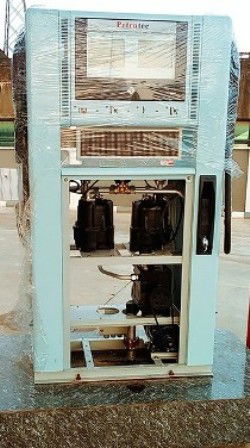FUEL PUMPS OR DISPENSERS
19Mar
Fuel pumps or dispensers: dispense (and cost) fuel into vehicles at filling stations. It is divided into two sections:
- Electronics: computerize the control of the pumping unit, meter, which measures and costs fuel.
- Mechanical: an electric motor controls the rate of fuel flow (from the underground storage tank (UST) >> pump unit >> filter >> meter >>solenoid valve >> nozzle >> vehicle). The filter removes solid impurities and cavitation[1].
Types of pumps / dispensers: Fuel dispenser works using the principle of suction or pressure.
- Suction pumps: Fuel stations mostly use suction pumps to pull fuel from the underground storage tank (UST). It works on the law of asymmetrical pressure, where in, a lower pressure in the UST pushes the fuel up to the dispensing nozzle via the pump and pipe.
- Submersible pump: In situations where, the topology of the fuel stations allow UST to be installed at a higher level compared to the fuel pumps. A submersible pump would have to be used in place of a suction pump. Reason being that, suction pumps tend to suck in air at such level instead of eradicating it. This action leads to cavitations in the fuel in the UST. Other reasons why fuel stations will opt for submersible pumps include:
- When the distance between fuel source (UST) and the dispensing point is far (above 30m) apart
- When doing multiple dispensing (that is, one UST supplying four or more dispenser pumps).

Petrotec dispenser ( a sample of suction pump)
[1] Cavitation is a situation that causes vacant spaces (or air bubbles) within the fuel.
Comments